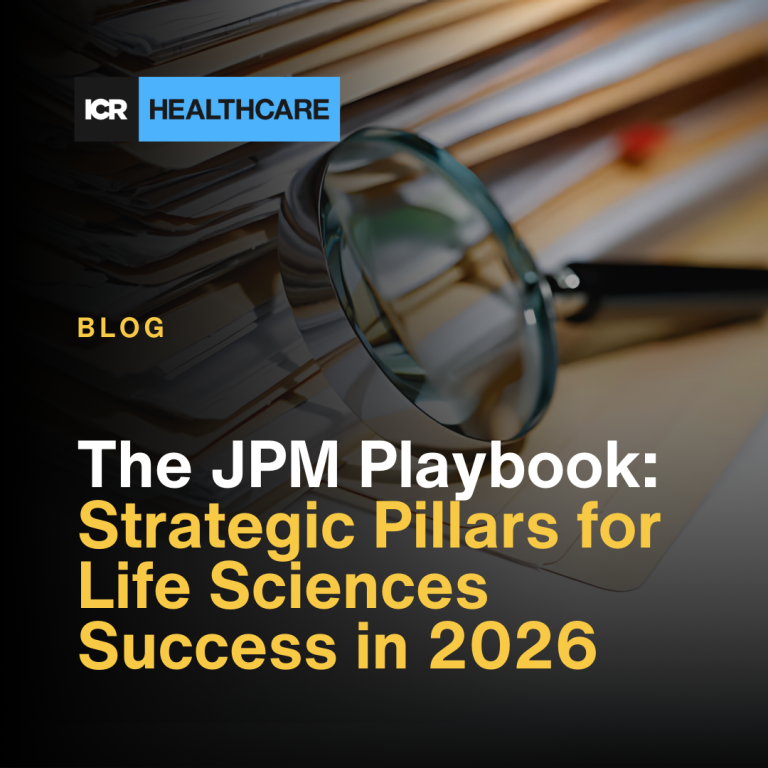The annual ICR Conference in mid-January is perfectly timed as most participants are discussing their thoughts for the year ahead. And with much uncertainty again as we enter 2023, this was definitely the case when 2,500 professionals got together in person recently for the first time in three years. While some preliminary Q4 results and holiday sales updates provided information on the most recent trends, they did not differ from expectations enough to change anyone’s outlook.
This time last year, concerns were focused on supply chains and gross margin comparisons, as well as a variety of other issues that made forecasting sales and earnings more difficult than it had been since the 2009 financial crisis. This year, the top concern is recession — if, when, how deep, and who is likely to be most impacted. Perhaps one of the biggest and most-welcome changes from the past two years was the lack of commentary on COVID-19. And finally, the one thing that everyone — almost unanimously from analysts to bankers and private equity attendees — was excited about: 2024!
Q4 Update:
There were far more positive than negative comments about Q4 and the holiday season, at least as compared to the very conservative expectations that were set by management teams. Overall, there was not much bad news. Most updates, as usual, came from true retail / brand / omni-channel companies and not their pure digital competitors (see list here). And while a number of companies raised bottom-line earnings guidance, any downside news, for the most part, stemmed from margin, with these companies still within previously shared earnings guidance ranges. Also, with sales generally in line with expectations and supply chains improving, inventory comments also supported the expectation that levels would continue to improve. Macy’s comments about softness in self-purchasing during the holiday period drew a lot of attention and raised concerns about the trend of consumer spending as we enter 2023.
2023 Outlook:
Published consensus estimates look cautious to very cautious for the first half of 2023, with some improvement in the back half of the year followed by optimism for 2024, which is when capital markets activity (e.g., IPOs) is expected to resume in full force. The bears view these 2023 estimates as still much too high given a likely recession this year. The bullish perspective is that easier earnings comparisons in the second half of the year combined with “light at the end of the recession tunnel” indicates that the worst for earnings, stock performance and capital markets activity will be seen in the first half.
Macy’s self-purchase comments, as well as its credit card data showing deteriorating payment rates, are just one example of why analysts and investors are somewhat cautious on 2023, especially the first half of the year when comparisons are the toughest. Older consumers should get a small lift from Social Security COLA adjustments and gas prices continue to ease, but this is in the face of continued inflation and higher interest rates, declining tax refunds, West Coast storms, a likely cut to Food Stamp/SNAP benefits for a segment of the population this spring, and savings accounts that are no longer flush with stimulus money.
The outlook for company margins is mixed. While most companies talked about declining cost of goods, improved supply chains, and peaking or improving inventory levels, there is no sign that labor rates have begun to moderate, and a few companies cited continued wage inflation at the conference. Shrink / theft (even organized crime) is the new topic of the year, and companies have lately been mentioning it as creating pressure on gross margin; and this is not an issue that seems to be short-term in nature.
What the analysts are saying post Conference:
- Overall, company commentary around consumer health and holiday results were mixed. While most companies performed better than initial guidance, expectations represented a low revenue and margin bar (similar to 3Q), suggesting fundamentals have yet to inflect since the second quarter’s stepdown.
- Consumers are intensely focused on value and needs-based categories and are less likely to spend on discretionary goods but are updating their wardrobes with fashion after a long period of staying home.
- We expect a choppy 2023 where idiosyncratic brand momentum and new product innovation is increasingly critical for driving results.
- Margin-driven EPS opportunity will be largely weighted toward the second half of the year.
- Most attendees remain concerned about the health of the consumer heading into 2023, and the word “recession” came up in most meetings.
- Depth and duration of macro headwinds were a key topic of discussion on the sidelines in conversations with the buy and sell side.
- There are concerns about 2023 estimates that feel too high and whether companies’ 2023 outlooks will be conservative enough. Of course, if employment rolls over then that will trigger a significant negative revision cycle.
- Investors are asking about companies’ investments / tools in forecasting demand to see who is best equipped to navigate a challenging consumer environment.
Conclusion:
The 25th Annual ICR Conference offered great timing to discuss the outlook for 2023. There was not much debate this year, as most participants agreed that business trends could get a little worse before they get better. Last year, there were more crosscurrents affecting the consumer with stimulus tailwinds still blowing but against rising interest rates and unmatchable margin comparisons from the year prior. For 2023: take away the stimulus and add a likely recession. With that said, the mood at the conference was upbeat and optimism for 2024 (and even a little for the second half of 2023) was the primary motivator.
Follow the entire ICR 2023 trends series on the ICR Insights blog.



